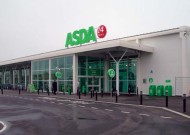 New guidance on the cost-effective design and construction of sustainable, low carbon supermarkets demonstrates how the operational carbon emissions of a typical supermarket building can meet the requirements of Part L 2010 without the need for renewable energy technologies.
New guidance on the cost-effective design and construction of sustainable, low carbon supermarkets demonstrates how the operational carbon emissions of a typical supermarket building can meet the requirements of Part L 2010 without the need for renewable energy technologies.
The report, ‘Target Zero: Guidance on the design and construction of sustainable, low carbon supermarket buildings’ from the British Constructional Steelwork Association (BCSA) and Tata Steel, with the co-operation of AECOM and Cyril Sweett, aims to provide those involved in designing and constructing supermarket buildings with a set of recommendations on meeting the Part L 2010 requirements and beyond.
The Target Zero project uses recently constructed buildings as benchmarks, investigating three priority areas of sustainable construction: operational carbon emissions, BREEAM assessment rating and embodied carbon. This is the third report in a series of five that analyses schools, warehouses, supermarkets, offices and mixed-use developments.
The basecase building for the supermarket report has been modelled on Asda’s food store at Stockton-on-Tees in Cleveland. This was completed in 2008 and covers a total floor area of 9,393m2, arranged over two levels. The supermarket is constructed with a steel frame.
To create the basecase supermarket, the actual building design was simplified so that the basecase just met the minimum requirements under Part L (2006), therefore, operational carbon reductions applied during the study are reported relative to the basecase only.
The key findings of the study are:
Through carefully integrated efficiency measures, a 35% reduction in regulated operational carbon emissions can be achieved, without renewable energy technologies. This results in a net present value saving over 25 years of -£973,545 relative to the performance of the basecase building. The package that delivers the best return combines high efficiency lamps and luminaires, reductions in specific fan powers of 20%, motion sensing controls, improved chiller efficiencies and boiler efficiencies increased to 95%, with the overall orientation of the building in a southerly direction to optimise the specification of glazed facades.
• It is predicted that the building can achieve true zero carbon using a package of compatible energy efficiency measures and on-site low and zero carbon technologies, i.e. 330kW wind turbine, biogas-fired CCHP and a 3,500m2 array of photovoltaics. This is expensive however representing a 26.5% capital cost increase.
• The greatest regulated carbon emissions reduction possible using a package of compatible energy efficiency measures and a single on-site low and zero carbon technology was 94%, using biogas-fired CHP.
• Lighting represented around half of the total operational carbon emissions for the basecase building. Therefore efficient lighting and optimal rooflight design were key to achieving significant operational carbon reductions cost effectively.
• The capital cost uplift of the base case supermarket is 0.24% to meet a BREEAM ‘Very Good’ rating; 1.76% to achieve an ‘Excellent’ rating and 10.1% to achieve an ‘Outstanding’ rating.
Derek Tordoff, Director General of the BCSA said: “In the competitive world of food retail it is recognised that the sustainability of the building plays an important role in the agenda. Retailers are increasingly under pressure to reduce their environmental impact in all areas of their business and this includes the physical building fabric of the retail environment. ‘Target Zero: Guidance on the design and construction of sustainable, low carbon supermarket buildings’ shows that retail organisations, their specifiers, engineers and contractors can achieve lower carbon emissions with improved long term savings by implementing relatively low capital cost efficiency measures.”
For more info on Target Zero,or to download a copy of the report visit www.targetzero.info




Comments are closed.